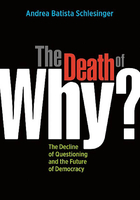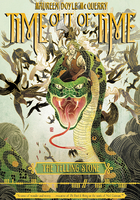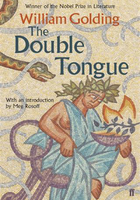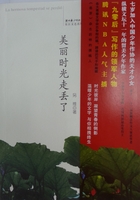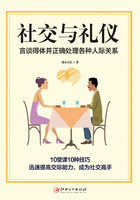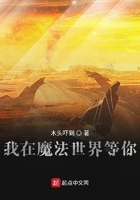Introduction
I have been a radical for fifty years and more
Stood against the rich and greedy
For the workers and the poor
From Canada to Mexico I traveled everywhere
Wherever trouble called me, I was there
Like stitches in a crazy quilt that women piece and sew
Wherever there was suffering, I was bound to go
With angry words for cowardice, comfort for despair
Whenever help was needed, I was there
I was there in the depressions
When times were at their worst
But we had them where we wanted
Like a dam about to burst
With fire in our bellies, revolution in the air
For a moment we saw clearly—I was there
There were times I saw the issues
In quite a different light
And old friends turned against me
But I never left the fight
When stones were in my passway
And the road was far from clear
Whether I chose right or wrongly, I was there
On a day when hope goes hungry
And your dreams seem bound to fall
You may see me at the mill
Or just outside the union hall
When the clouds are empty promises
The sky a dark despair
Like an eagle from the mountain, I'll be there
And you, my brave young comrades,
When the future sounds the call
Will you be there for the battle,
Will you answer, one and all
When the roll is called up yonder
When the roll's called anywhere
Will you stand and answer proudly, "We're still here"
Will you stand and answer proudly, "I was there"
I wrote this song some years ago as a tribute to Mother Jones, the great labor radical, famously called "the most dangerous woman in America." But, aside from the hyperbole (Mother Jones was not exactly renowned for her modesty, and I would never describe myself, as I believe she might easily have done, as "an eagle from the mountains"—totem animal-wise, I'm more of a stubborn dog that won't let go of a bone), it could easily be about me.
I have indeed been a radical "for fifty years and more," and proudly so. For forty-five of my almost sixty-six years, I've made my living as a professional civil rights, labor, and community organizer.
It was my great good fortune to begin my organizing career as a volunteer with the Student Nonviolent Coordinating Committee (SNCC), the militant student wing of the Southern Civil Rights Movement. SNCC (pronounced "SNICK") was nothing if not creative. Drawing on old traditions of African American resistance, shaped by veterans of the civil rights, labor, and peace movements, it developed not only ways of thinking about how community organizing can change the world for the better, but also strategies to make that real in the world. The great movements of the last forty-five years—among them those of women, workers, welfare recipients, peace lovers, students, lesbian, bisexual, gay, transgender and queer/questioning activists, union members, and environmentalists—would not have been what they were without the influence and lessons of the Southern Civil Rights Movement.
Most organizers spend their entire hard-working lives without ever being lucky enough to take part in a campaign or movement that gets noted by history. I have had the great good fortune to have been involved with five of them: In the 1960s, I joined the Southern Civil Rights Movement. In the 1970s and early 1980s, I was involved in the Brookside Strike, led by the United Mine Workers of America (UMWA) in Harlan County, Kentucky; the J. P. Stevens Campaign for unionization in the southern textile mills, led by the Amalgamated Clothing and Textile Workers Union (ACTWU); and the Brown Lung Movement, in which cotton mill workers disabled by the deadly disease known medically as byssinosis fought for compensation and to clean up the mills. Since the mid-1990s, Grassroots Leadership, the organization I've worked for over the last thirty years, has led the national campaign to abolish all for-profit private prisons, jails, and detention centers, and to put an end to immigrant family detention, the appalling recent practice in which children as young as infants are imprisoned together with their parents.
I don't deal with all these campaigns and movements in this book. Rather, I've chosen to write the way my grandmothers cooked, "a little of this, a little of that," to create a smorgasbord rather than a history, either of organizing or of my own life and work.
As with any trade, there is an established way to do community organizing, basic principles and skills that you'll find in any organizer's toolbox. A number of handbooks and strategy manuals lay all of this out, including my own earlier books How People Get Power and Organizing: A Guide for Grassroots Leaders. Pick up any of them, and you'll learn the common wisdom of generations of organizers, along with the shoptalk of the trade: one-on-ones, door knocking, strategy sessions, shift meetings, tactics, actions, accountability sessions, free media, negotiations.
That's not what this book is about. Rather, it deals with creative variations on the general theme of organizing. What distinguished the campaigns and movements in which I was involved was their creativity. I've spent my working life learning from the best—literally hundreds of civil rights, labor, and community organizers who brought not just passion and courage but great freshness and innovation to everything they did.
That's why this book is titled Creative Community Organizing. It's a tribute to all of the wonderful organizers with whom I've worked and shared stories over these forty-five years, a praise song to the traditions of activism and resistance we share, and that we work to pass on to the next generations of "rabble-rousers, activists, and quiet lovers of justice."
Because I'm not just an organizer, but also a historian, songwriter, and storyteller, I believe that a straight line is often the longest distance between two points. It's true that, as the saying goes, "If you don't know where you're going, any road will get you there."
But even if you have a clear destination in mind, it doesn't necessarily follow that the best way to get there is the shortest. You'll find that attitude reflected in the winding road that is this book, with lots of detours and side trips along the way. But, as creative community organizers, we do know where we're going— and we will get there.
In my own work as an organizer, I've tried to "keep my eyes on the prize," to stay focused on the goal, the victory that will give the people I'm working with changes for the better that they can see and feel. But I'm also concerned with what people learn on the way to that victory: about themselves, each other, history, justice, community, friendship. I want them to love the struggle for justice, not endure it.
So I've written this book the way I organize. Think of creative community organizing as a highway leading to somewhere you passionately want to go, but with lots of interesting side roads and paths to explore along the way. When in the course of this book you hit a song, a story, a poem, a bit of oral history, think of it as a chance to turn off the main drag for a little while, to rest yourself from the journey, to feel as well as to think.
As a historian, I tend to pay attention to the path behind as well as the road ahead. Because I want history to be accessible to a wide range of people who have different relationships to reading, I've used songs in my organizing as a way to tell stories. I am always moved and inspired when everyday people decide not just to read history but to make it, so it's their stories that so many of my songs are about.
The lyrics you'll encounter are taken from songs I wrote. If someone else wrote one of the poems or songs that salt the book, I'll tell you in the text who they are.
Why did I write this book? Almost every day, I encounter people who have a passionate desire to make a difference in the world, to do whatever it takes to change it for the better. Like the phototropic plants that grow towards the light, they lean towards doing what is right, often at considerable risk and cost. Dr. Martin Luther King Jr. said that "the arc of the moral universe . . . bends towards justice." So do individual people—and they are the salt of the earth.
My greatest hope is that when one of these natural-born activists says to someone who's been organizing for years, "So do you think I should become an organizer?" they'll tell them about this book and say, "Read it, then come back and talk with me."
I can't tell you whether you should become an organizer, full time or volunteer, although I hope many of you who read Creative Community Organizing will decide it's something that makes sense for you. I will just say that I cannot imagine any work that would have given me a better life and a stronger sense of having done my best to make a difference, not just for those with whom I've worked, but for myself.
As Mother Jones says in the song, "Whether I chose right or wrongly, I was there."



